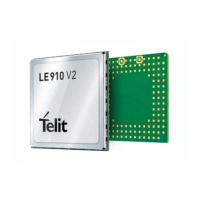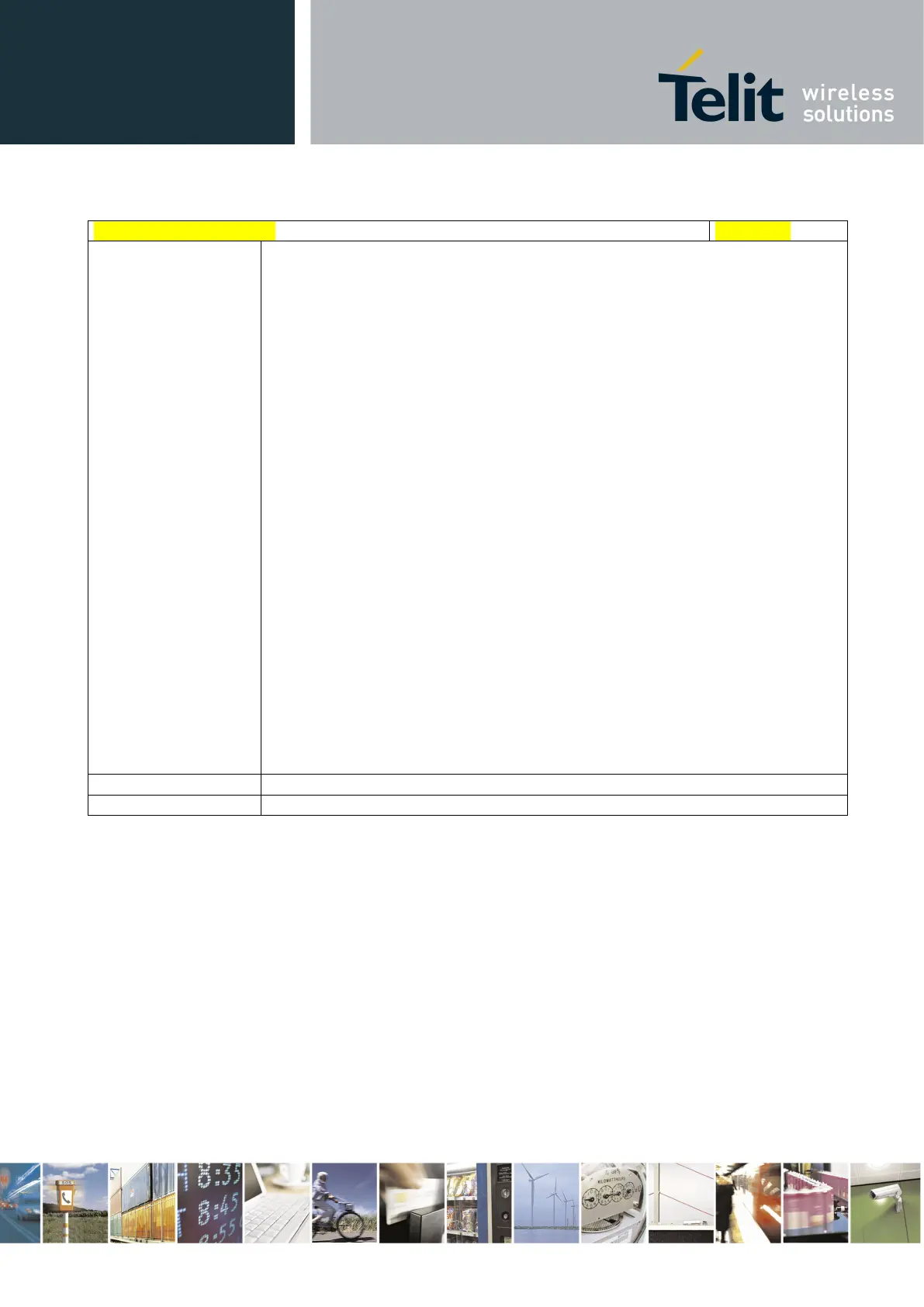Telit LE910 V2 Series AT Commands
80446ST10707A Rev. 0– 2015-11-03
Reproduction forbidden without Telit Communications S.p.A. written authorization - All Rights Reserved page 174 of 509
Mod. 0808 2011-07 Rev.2
a) Not Present if <fo> tells that the Validity Period Format is Not Present
b) Integer type if <fo> tells that the Validity Period Format is Relative
c) Quoted time-string type if <fo> tells that the Validity Period Format is
Absolute
d) Quoted hexadecimal representation of 7 octets if <fo> tells that the
Validity Period Format is Enhanced.
<oa> - Originator address, string type represented in the currently selected
character set (see +CSCS)
<da> - Destination address, string type represented in the currently selected
character set (see +CSCS)
<alpha> - string type alphanumeric representation of <da> or <oa>, corresponding
to an entry found in the phonebook; used character set is the one
selected with command +CSCS.
<sca> - Service Centre number
<tooa>,<toda >,<tosca> - type of number <oa>,<da>,<sca>
129 - number in national format
145 - number in international format (contains the "+")
<length> - text length
<data> - TP-User_data
• If <dcs> indicates that GSM03.38 default alphabet is used , each character of
GSM alphabet will be converted into current TE character set (see +CSCS)
• If <dcs> indicates that 8-bit or UCS2 data coding scheme is used, each 8-bit
octet will be converted into two IRA character long hexadecimal number (e.g.
octet 0x2A will be converted as two characters 0x32 0x41)
Note: in both cases if status of the message is 'received unread', status in the
storage changes to 'received read'.
Test command returns the OK result code

